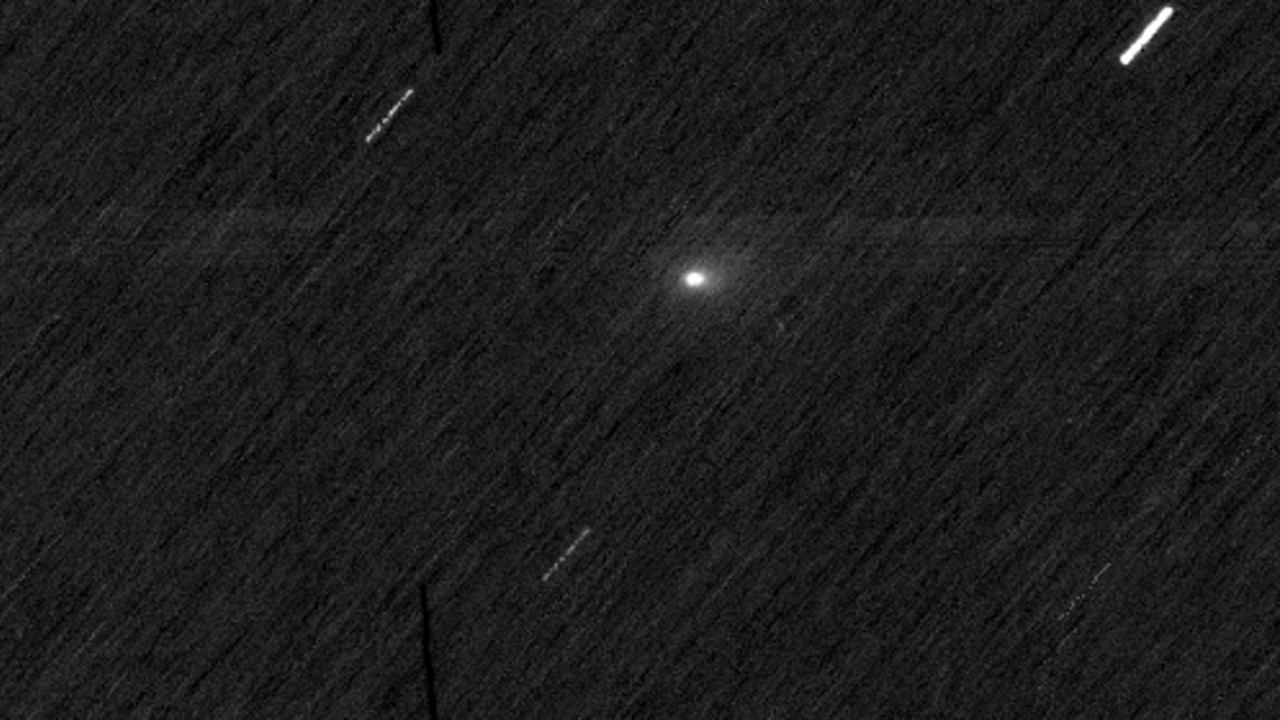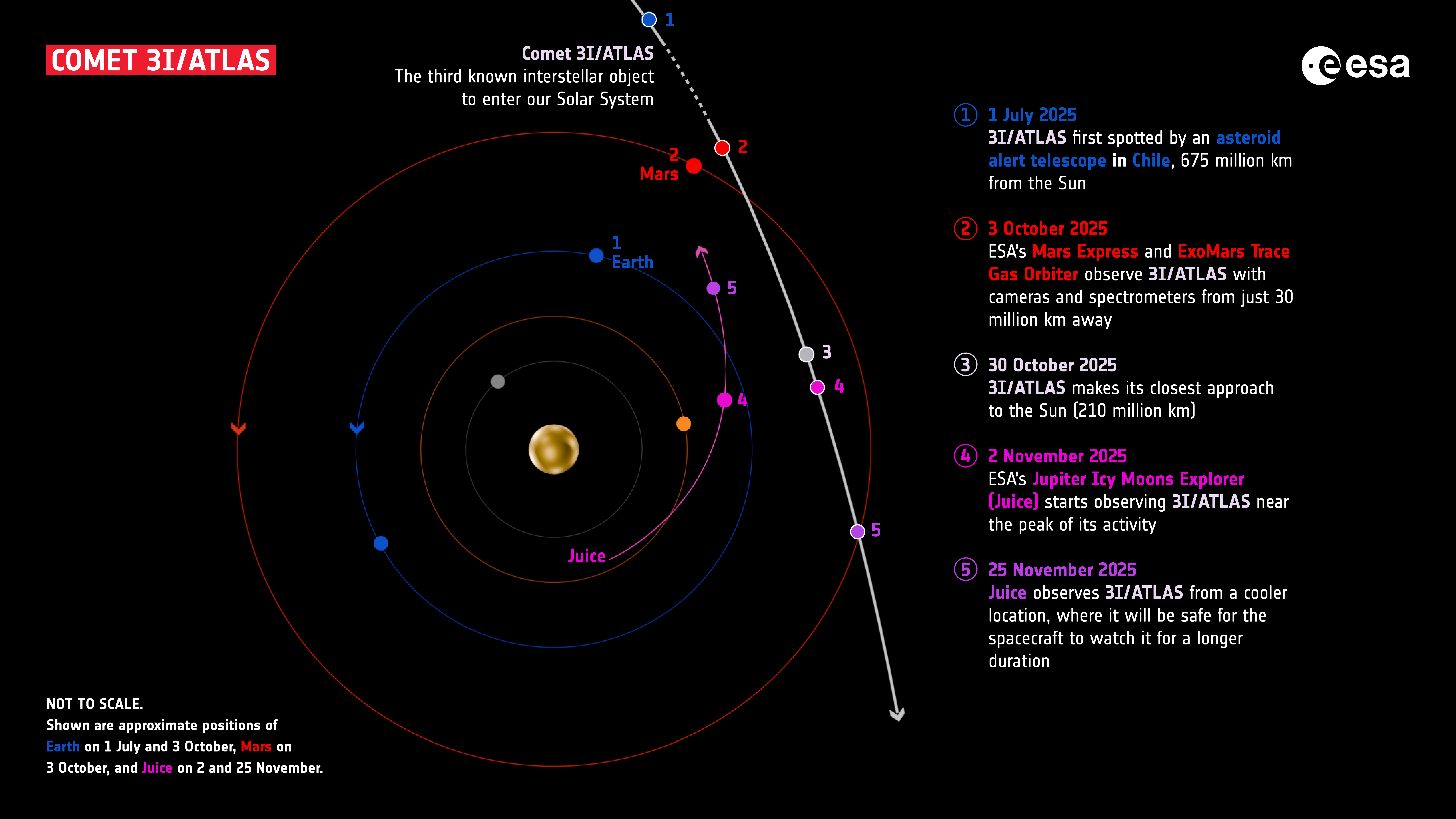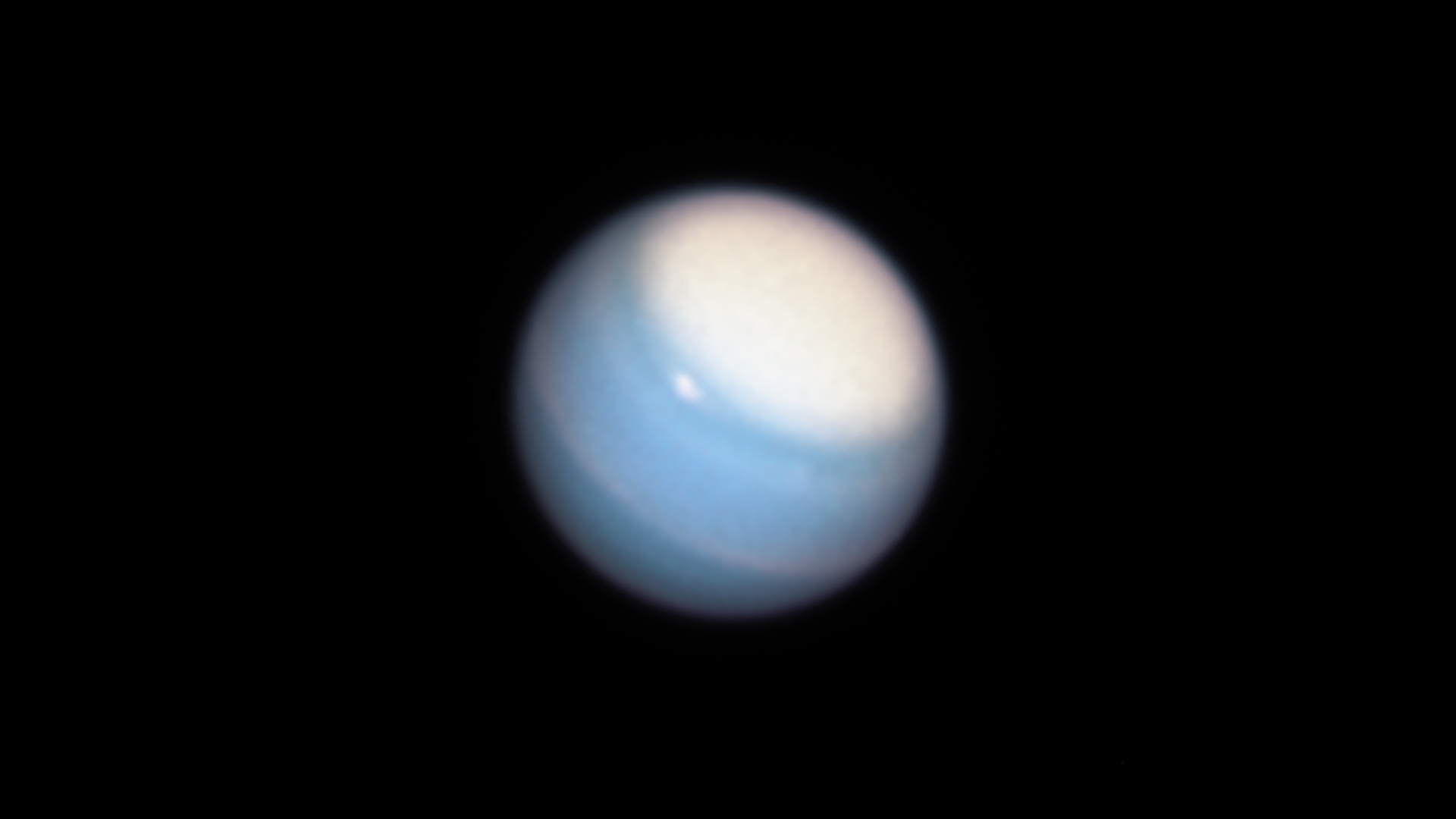European Mars orbiter spies interstellar comet 3I/ATLAS zooming past Red Planet (photos)
"Though our Mars orbiters continue to make impressive contributions to Mars science, it's always extra exciting to see them responding to unexpected situations like this one."

A European Mars probe witnessed the interstellar comet 3I/ATLAS' Red Planet flyby last week.
On Oct. 3, 3I/ATLAS zoomed within 19 million miles (30 million kilometers) of Mars. The European Space Agency's (ESA) ExoMars Trace Gas Orbiter (TGO) was ready for the closeup, snapping imagery of the interloper using its Colour and Stereo Surface Imaging System (CaSSIS).
"This was a very challenging observation for the instrument," CaSSIS Principal Investigator Nick Thomas said in a statement released by ESA on Tuesday (Oct. 7). "The comet is around 10,000 to 100,000 times fainter than our usual target."

Comet 3I/ATLAS was discovered this past July by the Asteroid Terrestrial-impact Last Alert System (ATLAS) telescope in Río Hurtado, Chile. The "3I" in its name indicates that it's just the third confirmed interstellar object observed in our solar system, after 1I/'Oumuamua in 2017 and 2I/Borisov in 2019.
Astronomers are keen to learn as much as they can about such visitors, which carry with them information about distant and mysterious realms.
"Every planet, moon, asteroid, comet and lifeform in our solar system share a common origin," ESA officials said in the statement. "But interstellar comets are true outsiders, carrying clues about the formation of worlds far beyond our own."
In 3I/ATLAS' case, those clues suggest an origin that's ancient as well as exotic: Astronomers think it's the oldest comet ever observed, with a birth that predates that of our own solar system by perhaps three billion years.
Breaking space news, the latest updates on rocket launches, skywatching events and more!
The observations made by TGO — which reached Mars in 2016 to sniff out methane and other trace gases in its atmosphere — were part of a concerted ESA campaign to study 3I/ATLAS as it cruises through the solar system.
For example, the agency's Mars Express orbiter, which has been circling the Red Planet since 2003, also attempted to photograph the comet on Oct. 3. Scientists have not yet resolved 3I/ATLAS in Mars Express imagery, "partly because these were taken with an exposure time of just 0.5 seconds (the maximum limit for Mars Express) compared to five seconds for ExoMars TGO," ESA officials said in the same statement.
"Though our Mars orbiters continue to make impressive contributions to Mars science, it's always extra exciting to see them responding to unexpected situations like this one," Colin Wilson, Mars Express and ExoMars project scientist at ESA, said in the same statement. "I look forward to seeing what the data reveals following further analysis."
Other spacecraft will turn their eyes on the icy object in the coming months as well, including ESA's JUICE probe, which is on its way to Jupiter (its name is short for Jupiter Icy moons Explorer).
JUICE will start looking for 3I/ATLAS on Nov. 2, just three days after the comet makes its closest approach to the sun (which will come at a distance of 130 million miles, or 210 million km).
3I/ATLAS will likely be in a more active state at this point, giving JUICE a real chance to resolve it, even though the Jupiter probe will be farther from the comet than ESA's Mars probes were on Oct. 3.

Michael Wall is a Senior Space Writer with Space.com and joined the team in 2010. He primarily covers exoplanets, spaceflight and military space, but has been known to dabble in the space art beat. His book about the search for alien life, "Out There," was published on Nov. 13, 2018. Before becoming a science writer, Michael worked as a herpetologist and wildlife biologist. He has a Ph.D. in evolutionary biology from the University of Sydney, Australia, a bachelor's degree from the University of Arizona, and a graduate certificate in science writing from the University of California, Santa Cruz. To find out what his latest project is, you can follow Michael on Twitter.
You must confirm your public display name before commenting
Please logout and then login again, you will then be prompted to enter your display name.

